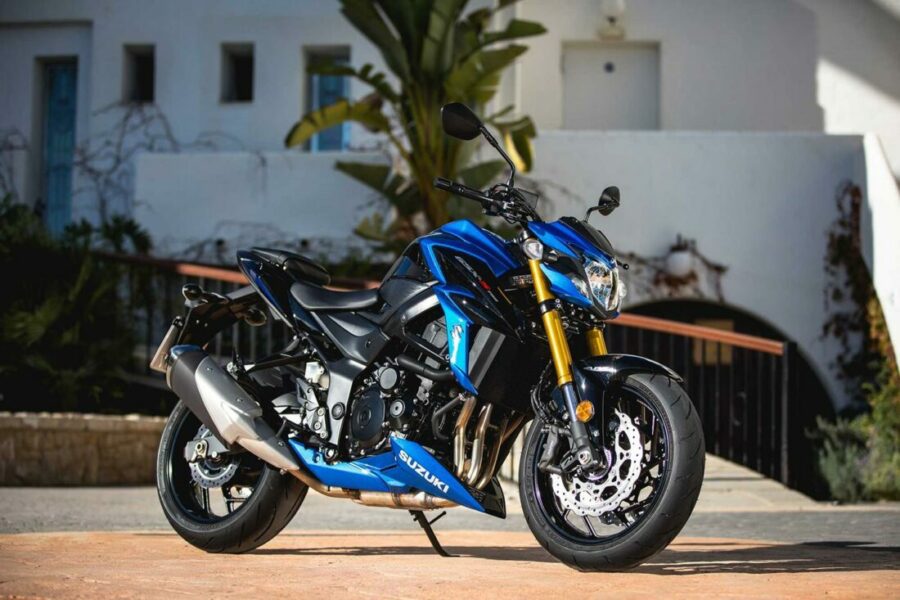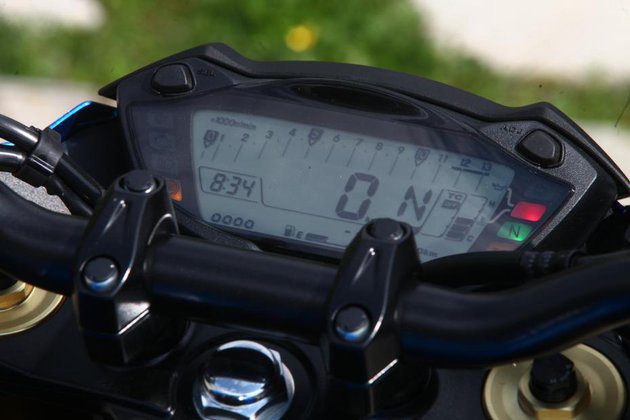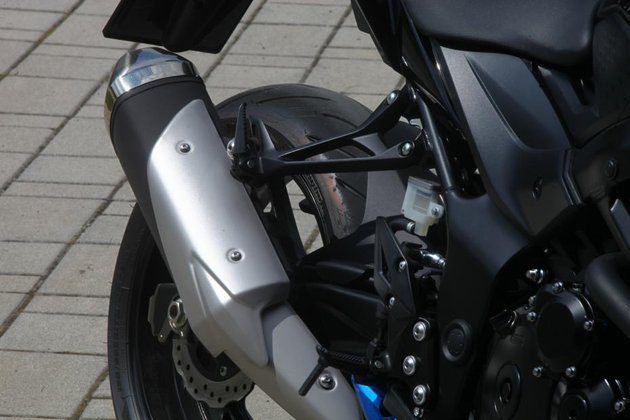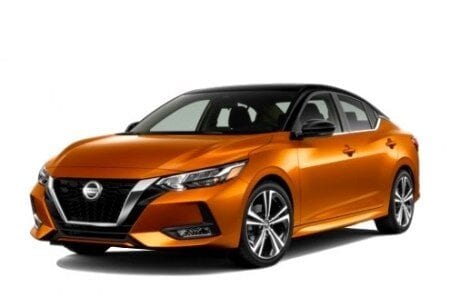
Test: Suzuki GSX-S 750 (2017)
Content
With such a bold and forward-looking statement, it can be concluded that Suzuki is very confident and convinced that their bare three-quarter engine should be convincing and hot enough for a while. But in this category of motorcycles, where competition between individual manufacturers is extremely high, a lot of new things have appeared this season, including Japanese ones. Therefore, having fairly fresh impressions from testing the Yamaha MT-09 and Kawasaki Z900 in Spain, we checked how much potential this newcomer has.
What news?
In fact, there is no doubt that the GSX-S 750 is the successor to the successful GSR. At Suzuki, to be more convincing to buyers, they shuffled the letters in the name of this model and paid a lot of attention to a more modern interior design style. However, the new GSX-S 750 is much more than just a stylishly updated Methuselah. It is already true that 2005 is specified in the base engine, and it is true that the frame itself has not undergone radical changes. However, those produced by hardworking Japanese engineers are specific, effective, and above all, highly visible.
As mentioned, they didn't skimp on changes or improvements. The revised frame geometry and a longer rear swingarm have increased the wheelbase by five millimeters. The front brake is also more powerful, specially prepared and tuned by Nissin for this model. ABS is of course standard, as is the anti-skid system. How it all works together, I'll tell you a little later. It is completely new, but otherwise inherited from the larger liter model. digital central display, hides behind a seemingly almost identical front grill and headlight.

The GSX-S has also been compared to its predecessor. much easier. This is mainly due to a completely new exhaust system and adjustments in the area of fuel injection. This is not entirely logical, but despite the significantly less bulky catalyst, the new engine is much cleaner. And of course stronger. The power boost is just right for the mid-range GSX-S 750 to catch the tail of the competition, but let's not forget that it has a marginally less displacement.

Engine, chassis, brakes
Given the fact that the components mentioned in the subtitle are the essence of stripped bikes, in a good week this test lasted, I was convinced that Suzuki maintains a solid position in this class of bikes, but also has some reserves.
Those we know previous generations of Suzuki with three-quarter four-cylinder engines, we know that these are engines with an almost double character. If you were gentle with them, they were very polite and kind, and if you turned the gas more decisively, they instantly became more wild and cheerful. The four-cylinder engine retains its character in the latest version. It gets really alive at a good 6.000 rpm, and by then it's already written on skin for beginners. Also useful is the automatic engine speed control system when driving slowly. Don't worry if you're one of those clutch swearing, you won't even notice the clutch system interfering somewhere in the background.
It may bother you more tingling in the body, caused by a motor speed of about 7.000 rpm, even longer dead motion of the throttle lever. While some may disagree, I contend that the aforementioned engine ambiguity is good for this Suzuki. Thanks to this feature, this engine is able to satisfy the tastes and needs of a fairly wide range of potential customers. For those who are just starting their career in motorsport, this is enough for a day spent on a popular section of the road or maybe even on the track, and for those who consider themselves more experienced, for a series of fun and fun. kilometers on the way.


It's no different that a motorcycle with 115 "horses" and weighing only two hundred kilograms would be something other than just incredible entertainment. I admit that the dimensions and roominess are a bit, but the GSX-S does not cause discomfort. After the first impression, I thought the ride would be tiring as the body tilted slightly forward, but I was wrong. I also traveled a lot around the city with him, and he quickly shows where the bike gets tired or not. I'm probably one of the less sensitive, but I found the GSX-S to be a perfectly acceptable bike in this area. I confess that due to the good stability and accuracy in turns, I am ready to ignore many of the shortcomings, so when it comes to driving, I do not find bad words about this Suzuki.
Unlike some other Japanese strippers, this one will only grow in your heart when you bring the steering wheel closer to the pavement. At times like this, the aforementioned dead end of the throttle lever is annoying, and many may also like the possibility of more extensive front suspension adjustments. Don't worry, Suzuki will take care of that with updates as usual. Be that as it may, there are colorful sections of the road on his skin, for example, the Maria Reka Pass, through which I returned the test bike to Celje in the middle of the morning. It only seems to you that in the turn, that every turn is too short for this bike... And this is the essence of a simplified motorcycle.
If you are one of those people who often switch from motorcycle to motorcycle, you have a problem. The brakes on the GSX-Su are great. Powerful and with precise dosing of braking force. ABS is present as standard, but I have never found its interference. By far the braking system is one of the most compelling components on this bike, so you are sure to miss them on many other bikes.

Four-speed traction control, but not for the North Cape
It is correct to note another technique that does its job well on the GSX-S 750. It is an anti-slip system that basically has three stages of work. Selecting the desired setting is easy, fast and even while driving with a simple set of commands. Only at the most intense stage does the electronics interfere more with the rotation of the engine, The fourth level - "OFF" - will surely appeal to most people.
I believe that everyone should choose their motorcycle according to their lifestyle, not according to their expectations and ability to drive. Which will make you a great model if you are, for example, a gardener or a lumberjack. In a greenhouse or in a forest, he simply will not feel good. Make no mistake, choose a beauty, not a model, with a cross with them. The same goes for a disassembled motorcycle. Forget the afternoon travel or shopping in Trieste. The GSX-S 750 doesn't stand out here. It has little space, too stiff suspension, too little field of view in the mirrors, too little wind protection and, most importantly, too much anxiety. However, this is all a recipe for a great motorcycle with slightly different expectations.
Hack and predictor Aviator
Perhaps Suzuki really didn't expect virtually all of the major manufacturers to come up with such compelling innovations in this category of motorcycle. And it's true, the GSX-S 750 sent you on a grueling journey. However, the measure of virtue in this price segment is just right, you should seriously count on it. The GSX-S 750 is an excellent Tauzhentkinzler: he cannot do everything, but he does everything that he knows and knows how to do well. During the week of test days, he proved that he can be a great companion every day, and on weekends, with some modifications on my part, he can also be a great "companion" for a wonderful day on the road. Nice bike, Suzuki.
Matyaj Tomajic
Basic data
Sales: Suzuki Slovenia
Base model price: 8.490 €
Test model cost: 8.490 €
Technical information
engine: 749 cc XNUMX XNUMX-cylinder in-line, water-cooled
Power: 83 kW (114 hp) at 10.500 rpm
Torque: 81 Nm at 9.000 rpm
Energy transfer: 6-speed gearbox, chain,
Frame: aluminum, partially steel tubular
brakes: front 2 discs 310 mm, rear 1 disc 240 mm, ABS, anti-slip adjustment
Suspension: front fork USD 41mm,
rear double swingarm adjustable,Tires: before 120/70 R17, rear 180/55 R17
Growth: 820 mm
Fuel tank: 16 liters
- Test errors: unmistakable
We praise and reproach
the emergence of a larger, more powerful model
brakes
driving performance,
switchable TC
spacious, long driver's seat
Dead Throttle Lever
Vibration at medium speed (new, inoperative engine)
Rearview mirrors too close to the driver's head

